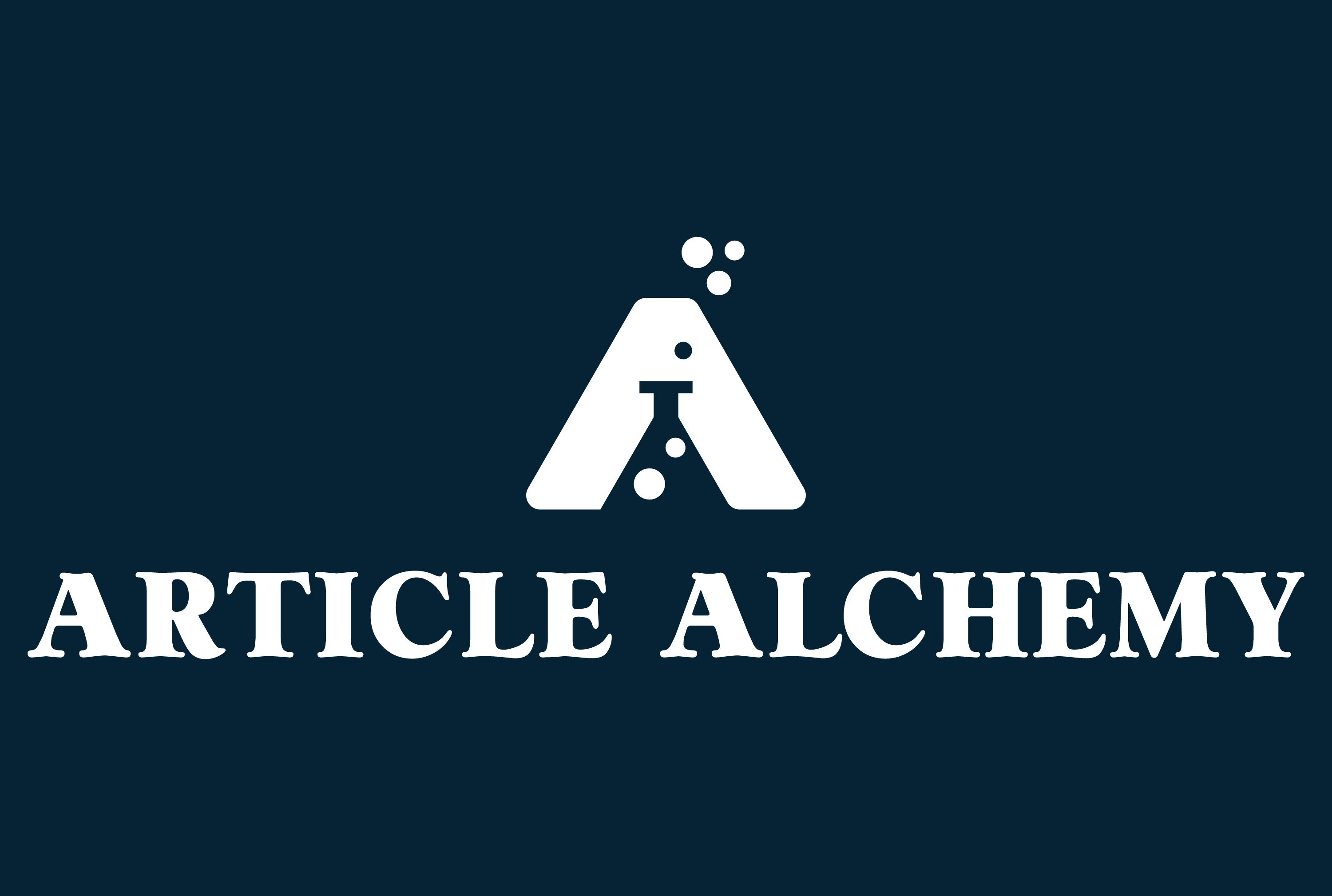
Your cybersecurity expertise could save businesses from devastating attacks, but potential clients can’t find you when they search online.
While competitors with weaker security solutions get qualified leads through Google, your valuable services remain buried on page five of search results.
The solution isn’t more cold outreach or expensive ads, it’s strategic SEO designed specifically for cybersecurity companies.
Unlike generic SEO advice, cybersecurity firms face unique challenges: highly technical services, trust-based decision making, and complex buyer journeys that demand specialized optimization strategies.
This guide covers everything you need to build a search presence that attracts high-intent prospects actively seeking security solutions.
What Makes Cybersecurity SEO Different
Cybersecurity SEO operates under unique constraints that don’t apply to most industries.
Your prospects aren’t browsing casually, they’re researching solutions to protect their organization’s most valuable assets.
Trust and Authority Requirements
Unlike e-commerce or local services, cybersecurity purchases involve massive risk.
A wrong decision could result in data breaches, regulatory fines, or business closure. This creates an extremely high bar for establishing credibility online.
Your website must demonstrate expertise immediately.
Generic stock photos and vague service descriptions won’t convince a CISO to trust you with their network security.
Every page needs specific evidence of your capabilities, such as certifications, case studies, detailed methodologies, and clear explanations of complex concepts.
Search engines recognize this trust factor. Google’s E-E-A-T guidelines (Experience, Expertise, Authoritativeness, Trustworthiness) heavily influence rankings in YMYL (Your Money or Your Life) topics—and cybersecurity qualifies.
Technical Complexity Challenges
Cybersecurity involves highly technical concepts that most business decision-makers don’t fully understand.
This creates a content challenge: you must educate prospects while remaining discoverable for their actual search terms.
Most cybersecurity buyers search for business problems, not technical solutions.
They type “prevent ransomware attacks” rather than “endpoint detection and response platforms.”
Your content strategy must bridge this gap, connecting business pain points to technical solutions.
This also means your keyword research differs significantly from other B2B industries.
High-volume technical terms often attract the wrong audience—IT professionals researching tools they’ll never purchase versus executives with actual buying authority.
Compliance Considerations
Many cybersecurity clients operate under strict regulatory requirements.
Healthcare organizations need HIPAA compliance, financial services must meet PCI DSS standards, and government contractors require specific security clearances.
These compliance needs create highly targeted search opportunities.
Content addressing specific regulatory requirements attracts pre-qualified prospects who already understand they need professional cybersecurity support.
However, compliance content requires extreme accuracy.
Incorrect information about regulatory requirements can damage your reputation and potentially harm client organizations. Compared to other industries, this raises the stakes for content quality.
B2B Decision-Making Dynamics
Cybersecurity purchases involve multiple stakeholders with different concerns.
IT directors focus on technical capabilities, CFOs worry about costs and ROI, and CEOs care about business continuity and reputation protection.
Your SEO strategy must address each stakeholder’s specific information needs throughout an extended evaluation process. A single prospect might read dozens of your articles over several months before making contact.
This extended research cycle means traditional conversion metrics don’t tell the whole story.
A prospect might consume your content for weeks before converting, making attribution challenging but essential for comprehensive content coverage.
Essential SEO Strategies for Cybersecurity Companies
Cybersecurity SEO requires a fundamentally different approach than other industries.
Your prospects aren’t impulse buyers, they’re making critical decisions that could determine their company’s survival after a breach.
Industry-Specific Keyword Research
Start with the problems your clients face, not the solutions you provide.
Instead of targeting “penetration testing services,” focus on searches like “how to prevent data breaches” or “signs of ransomware attack.”
Use these keyword categories:
- Problem-focused keywords: “data breach prevention,” “ransomware protection,” “network vulnerability assessment.”
- Educational queries: “What is social engineering?” “how hackers access networks,” “cybersecurity audit checklist.”
- Compliance searches: “HIPAA security requirements,” “PCI DSS compliance,” “SOX cybersecurity controls.”
- Industry-specific terms: “healthcare cybersecurity,” “financial services security,” “manufacturing cyber threats.”
Tools like Semrush and Ahrefs will show search volumes, but prioritize keywords where you can demonstrate evident expertise.
A keyword with 100 monthly searches that converts at 15% beats one with 1,000 searches and 1% conversion rate.
Authority-Building Content Creation
Your content must prove you understand both cybersecurity and business impact.
Generic “5 cybersecurity tips” articles won’t differentiate you from hundreds of competitors.
Create content that showcases real expertise like:
- Incident response walkthroughs: Document actual breach scenarios (anonymized) and your response process. This demonstrates competence better than any sales pitch.
- Threat intelligence updates: Regular analysis of emerging threats affecting your target industries. Position yourself as the go-to source for current security intelligence.
- Compliance deep dives: Detailed guides for industry-specific regulations. A comprehensive HIPAA security guide will attract healthcare prospects for months.
- Tool comparisons and reviews: Honest evaluations of security tools, including limitations. IT directors trust advisors who acknowledge trade-offs.
Technical Optimization Requirements
Your website’s technical foundation must reflect your cybersecurity expertise.
A slow, insecure site destroys credibility before prospects read your content.
Essential technical elements:
- SSL certificates: Use Extended Validation (EV) certificates that display your company name in the browser bar
- Security headers: Implement HSTS, CSP, and X-Frame-Options to prevent common attacks
- Fast loading speeds: Aim for under 3 seconds on mobile. Use tools like GTmetrix to identify bottlenecks
- Clean code: Minimize JavaScript and CSS files. Bloated code suggests poor attention to detail
Local SEO for Service Areas
Most cybersecurity firms serve specific geographic regions or have physical offices. Local SEO captures prospects searching for “cybersecurity companies near me” or “Dallas penetration testing.”
Optimize your Google Business Profile completely:
- Add all services with detailed descriptions
- Include photos of your team and office
- Respond to every review professionally
- Post regular updates about new threats or services
Create location-specific content addressing regional concerns.
For example, if you serve healthcare organizations in Texas, write about Texas medical privacy laws and how they intersect with cybersecurity requirements.
Technical Requirements and Best Practices
Your website’s technical foundation directly impacts both search rankings and prospect confidence.
In cybersecurity, a poorly optimized site hurts SEO and undermines credibility as a security expert.
Security-First Website Optimization
Your website must exemplify the security practices you recommend to clients.
Prospects will scrutinize your site’s security implementation, and search engines reward secure, well-maintained websites.
Essential security implementations:
- SSL/TLS certificates: Use Extended Validation (EV) certificates that display your company name in green in the address bar
- Security headers: Implement HTTP Strict Transport Security (HSTS), Content Security Policy (CSP), and X-Frame-Options
- Regular security scans: Run vulnerability assessments on your site and display security badges prominently
- Secure hosting: Choose hosting providers with strong security reputations and DDoS protection
These aren’t just technical requirements, they’re trust signals that prospects evaluate when considering your expertise.
Core Web Vitals for Cybersecurity Sites
Google’s Core Web Vitals directly impact rankings, but cybersecurity sites face unique challenges.
Security tools, compliance widgets, and detailed technical content can slow loading speeds.
Here are some critical performance metrics:
- Largest Contentful Paint (LCP): Should occur within 2.5 seconds. Optimize by compressing images, using next-generation formats like WebP, and implementing lazy loading for below-the-fold content.
- First Input Delay (FID): Must be under 100 milliseconds. Minimize JavaScript execution time and prioritize critical resources. Security plugins often add significant JavaScript—audit their impact regularly.
- Cumulative Layout Shift (CLS): Keep under 0.1. Reserve space for security badges, compliance logos, and any dynamic content that loads after initial page render.
Use Google PageSpeed Insights monthly to monitor performance.
A cybersecurity site that loads slowly suggests poor attention to technical details—exactly the opposite impression you want to create.
Mobile Responsiveness Considerations
Over 60% of B2B searches, including initial cybersecurity research, now happen on mobile devices. Your mobile experience must be flawless, as executives often research security solutions during commutes or travel.
Mobile optimization priorities:
- Touch-friendly navigation: Ensure all menu items and buttons are easily tappable
- Readable text: Use minimum 16px font sizes without requiring zoom
- Fast mobile loading: Prioritize critical CSS and defer non-essential resources
- Simplified contact forms: Minimize required fields and use auto-complete attributes
Test your mobile experience regularly using real devices, not just browser developer tools.
What looks acceptable in Chrome’s device simulator might be challenging to use on actual smartphones.
HTTPS and Trust Signals
Security indicators throughout your site reinforce your expertise and improve search rankings. Google considers HTTPS a ranking factor, but it’s table stakes for cybersecurity companies.
Here are some of the most crucial trust signal implementations:
- SSL certificate information: Display certificate details prominently, especially if you use Extended Validation
- Security certifications: Show relevant certifications (CISSP, CISM, CompTIA Security+) with verification links
- Compliance badges: Display SOC 2, ISO 27001, or other relevant compliance certifications
- Third-party security verification: Include security scan results from recognized testing services
Position trust signals strategically throughout your site, not just buried in footer text.
Prospects evaluate your credibility continuously while browsing your content.
Building Authority Through Link Building

Link building for cybersecurity companies requires a fundamentally different approach than other industries.
Industry-Specific Link Opportunities
Cybersecurity offers unique link-building opportunities that other industries can’t access. Focus on channels where your target audience already consumes information.
- Industry publications and blogs: Contribute to established cybersecurity publications like CSO Online, Dark Reading, or Security Boulevard. These sites have high domain authority and reach your exact target audience.
- Compliance and regulatory resources: Create comprehensive guides for industry-specific regulations. Healthcare organizations searching for HIPAA compliance resources will link to authoritative guides, generating links and qualified traffic.
- Threat intelligence sharing: Publish original research about emerging threats. When other cybersecurity professionals reference your findings, they naturally link back to your research. Brian Dean’s Google ranking study earned 18,900+ backlinks by providing unique data that others frequently cite.
- Tool and vendor directories: Many organizations maintain lists of recommended cybersecurity tools and service providers. Getting listed in these directories provides relevant backlinks from high-authority sites.
Thought Leadership Strategies
Position your team as industry experts through consistent, valuable content that other professionals want to reference and share.
Here are some effective thought leadership tactics:
- Original threat research: Analyze attack patterns, publish vulnerability discoveries, or document new social engineering techniques. Security researchers frequently cite original findings, creating natural backlink opportunities.
- Incident response case studies: Document anonymized breach responses, including lessons learned and prevention strategies. Other security professionals will reference real-world examples in their content.
- Compliance interpretation: Regulatory requirements often contain ambiguous language. Publish detailed interpretations with practical implementation guidance. Legal and compliance professionals will link to authoritative explanations.
- Conference presentations: Speaking at industry events generates backlinks from conference websites, attendee blogs, and presentation repositories. Submit to events like RSA Conference, BSides, or industry-specific conferences.
Partnership and Collaboration Opportunities
Cybersecurity firms often work with complementary service providers, creating natural link exchange opportunities that benefit both parties.
Here are some ideas for strategic partnership approaches:
- Technology vendor relationships: Partner with software vendors whose tools you implement or recommend. These relationships often result in case studies, partner directory listings, and co-authored content.
- Legal and compliance firms: Collaborate with attorneys specializing in data privacy law. Cross-reference each other’s expertise in content about regulatory compliance and breach response.
- Insurance brokers: Many cyber insurance providers maintain resource libraries for policyholders. Contribute educational content that helps their clients understand security requirements.
- Industry associations: Participate actively in cybersecurity and industry-specific associations. Members often link to valuable resources shared by fellow professionals.
Avoiding Common Pitfalls
Cybersecurity link building involves higher stakes than other industries.
Low-quality or irrelevant links can damage your professional reputation alongside your search rankings.
Some critical mistakes to avoid are:
- Irrelevant directory submissions: General business directories provide little value and can harm your search rankings. Focus on cybersecurity-specific directories and professional associations.
- Reciprocal link schemes: “I’ll link to you if you link to me” arrangements look artificial to search engines and don’t provide credibility benefits with prospects.
- Guest posting on low-quality sites: Publishing on sites with poor reputations can damage your professional credibility. Only contribute to publications your prospects read and trust.
- Over-optimized anchor text: Using exact-match keywords in all your backlink anchor text looks manipulative. Vary anchor text naturally, using your company name, branded terms, and natural phrases.
- Buying backlinks: Purchased links violate Google’s guidelines and can result in search penalties. More importantly, they don’t build the professional relationships that generate ongoing referrals and partnerships.
Focus on building genuine relationships within the cybersecurity community.
Links earned through valuable contributions and professional partnerships provide SEO benefits and business development opportunities.
Measuring Success and ROI
Cybersecurity SEO requires metrics that are different from those of other industries.
Key Metrics for Cybersecurity SEO
Standard SEO metrics like click-through and bounce rates don’t tell the complete story for cybersecurity companies. Focus on metrics that align with your actual business outcomes.
Revenue-focused metrics:
- Qualified lead generation: Track leads that match your ideal client profile, not just total contact form submissions
- Pipeline velocity: Measure how SEO-generated leads move through your sales process compared to other channels
- Customer lifetime value by source: SEO leads often have higher CLV due to their extensive research before contact
- Cost per acquisition: Compare SEO’s long-term cost per client against paid advertising and other marketing channels
Content engagement indicators:
- Time on high-value pages: Monitor engagement with service pages, case studies, and technical resources
- Content depth consumption: Track users who read multiple articles in single sessions—indicating serious research intent
- Return visitor behavior: Prospects often return multiple times before converting. Monitor repeat visitor patterns and content consumption.
- Download and resource engagement: Track white paper downloads, checklist uses, and assessment tool completions.
Tools for Tracking Performance
Cybersecurity SEO requires specialized tracking approaches connecting website behaviour to business outcomes.
Essential tracking tools:
- Google Analytics 4 with enhanced e-commerce: Set up goal funnels that track prospect progression from initial content consumption through contact and qualification. Configure custom events for high-value actions like case study views or assessment completions.
- Search Console optimization: Monitor which cybersecurity-related queries drive traffic. Track impressions for high-value keywords to identify content gaps and optimization opportunities.
- CRM integration: Connect website behavior data to your sales pipeline. Tools like HubSpot or Salesforce can track which content pieces influence deals and identify your most valuable SEO-driven prospects.
- Call tracking: Many cybersecurity prospects prefer phone contact over forms. Use call tracking numbers on SEO landing pages to measure phone conversions and optimize accordingly.
- Heat mapping tools: Use Hotjar or Crazy Egg to understand how prospects interact with your service pages and technical content. Optimize based on actual user behavior patterns.
Setting Realistic Expectations
Cybersecurity SEO operates on longer timelines than most industries.
Set expectations that align with your prospects’ actual buying behavior.
Timeline expectations:
- Months 1-3: Technical foundation and initial content publication. Expect minimal ranking improvements but establish tracking baselines.
- Months 4-9: Content begins ranking for target keywords. Traffic increase, but lead quality may vary as you refine targeting
- Months 10-18: Established content authority drives consistent qualified traffic. Lead quality improves as content better qualifies prospects
- 18+ months: Compound effects of authority building generate sustainable organic growth with higher conversion rates
Conversion rate realities: Cybersecurity services have naturally lower conversion rates due to high stakes and long evaluation periods. A 2-3% conversion rate from organic traffic often outperforms other industries’ 5-6% rates in actual revenue generation.
Long-Term Growth Indicators
Monitor leading indicators that predict sustained SEO success, not just current performance metrics.
Authority building signals:
- Brand search growth: Increasing searches for your company name indicate growing market awareness
- Citation and mention frequency: Track unlinked mentions of your company in industry discussions and publications
- Speaking and content opportunities: Invitations to conferences or guest posting requests indicate growing industry recognition
- Competitor analysis: Monitor your ranking improvements against established competitors for target keywords
Content performance trends:
- Evergreen content longevity: Track how long your educational content continues attracting traffic and generating leads
- Seasonal content patterns: Understand how cybersecurity awareness events, compliance deadlines, and industry conferences affect search behavior
- Content refresh requirements: Monitor when technical content needs updates due to evolving threats or regulatory changes
Ready to Secure Your Search Rankings?
Cybersecurity SEO isn’t about quick wins but building the digital authority your expertise deserves. Start with technical foundations, create content demonstrating real knowledge, and focus on the metrics that drive business growth.
Your prospects are searching for cybersecurity solutions right now. The question is whether they’ll find you or your competitors.
Need help implementing these strategies for your cybersecurity firm? Contact us to discuss how we can boost your search visibility and attract more qualified leads.





